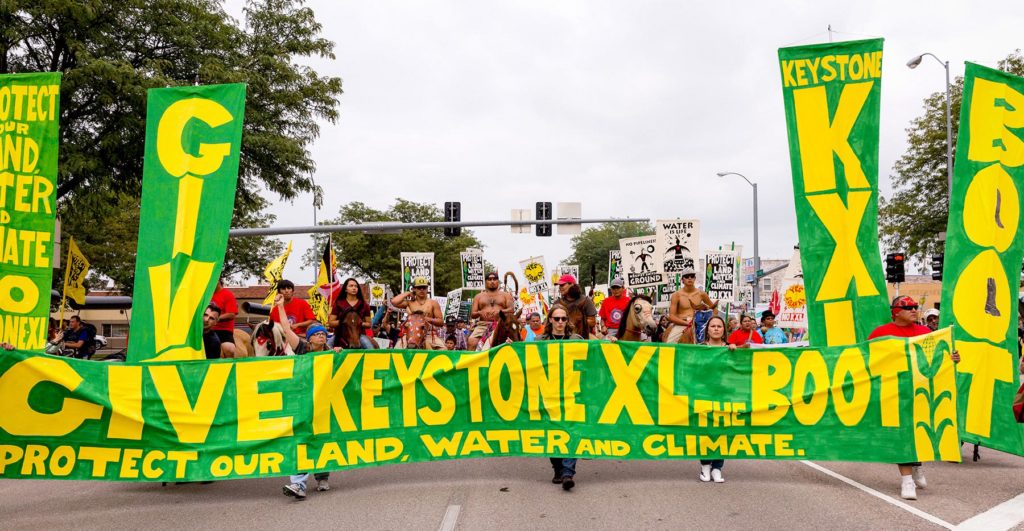From the October issue of In These Times.
Landowners who live along its proposed route—made
an unconditional pledge: “Standing Rock was a dress rehearsal compared to what this will be. We are not going to let an inch of foreign steel touch Nebraska soil.”
A gauntlet had been thrown.
Water contamination is of special concern for the tribes. If any one phrase captures what has animated the battles against Keystone XL and DAPL, it’s Mni Wiconi, Lakota for “water is life.”
“It’s the first medicine,” Spotted Eagle says. “When a baby is being born there’s water, and two-thirds of our bodies are water, which is a reflection of Mother Earth.”
Water infrastructure in the rural areas on and around reservations tends to be either drastically underfunded or nonexistent. According to a 2013 report from the Indian Health Service, a federal agency, 7.5 percent of Native American and Alaska Native homes lack safe drinking water. Combined with reservations’ stunningly high poverty rates (43.2 percent at Standing Rock), the destruction of the area’s main source of drinking water could provoke serious health crises.
Water quality is also a serious concern for farmers and ranchers, whose livelihoods depend on clean water for crops and cattle. Fifty-four percent of land on the Ogallala Aquifer is used for agriculture, including the several-hundred-mile stretch through Nebraska and South Dakota where many TransCanada opponents live. Farmer Art Tanderup, an anti-pipeline advocate whose land Keystone would cross, explains that the farmland on the Ogallala is “basically a sponge,” making it exceptionally vulnerable.
“It would be devastating,” he says of the possibility of a major spill. “We would not be able to have drinking water here … or to farm or build up topsoil.”




